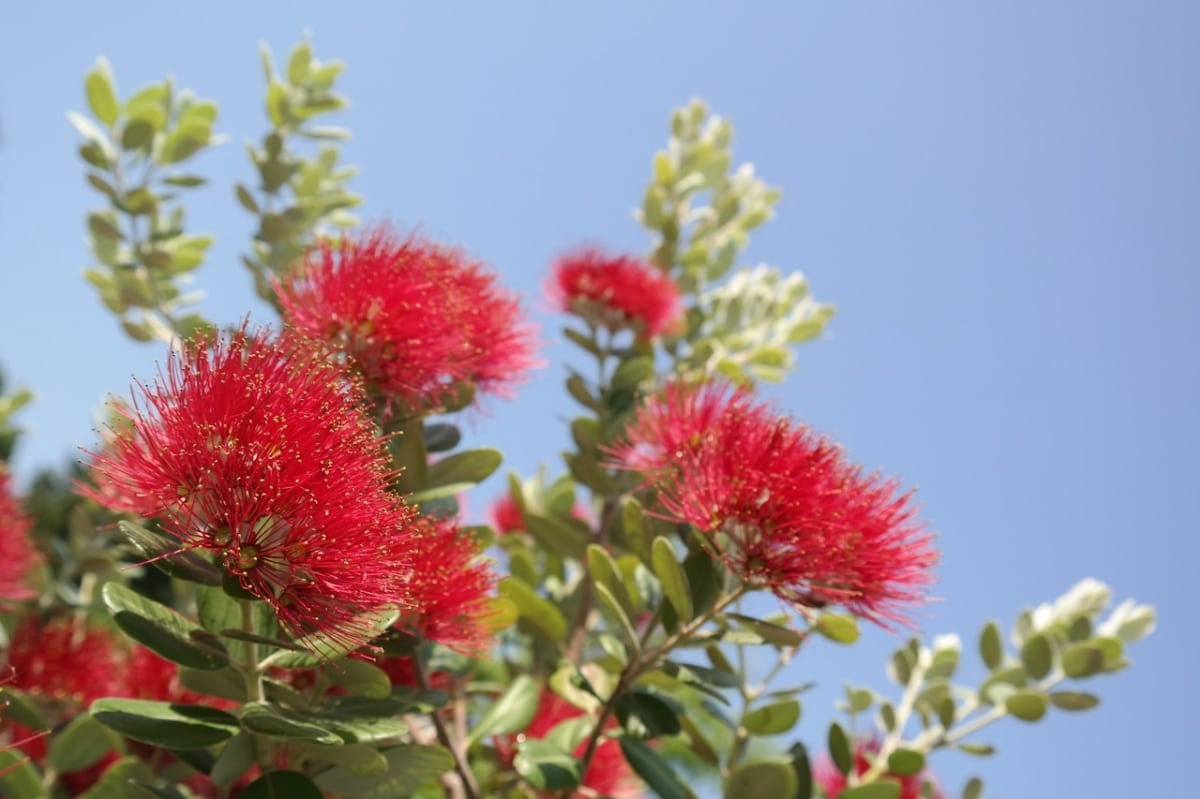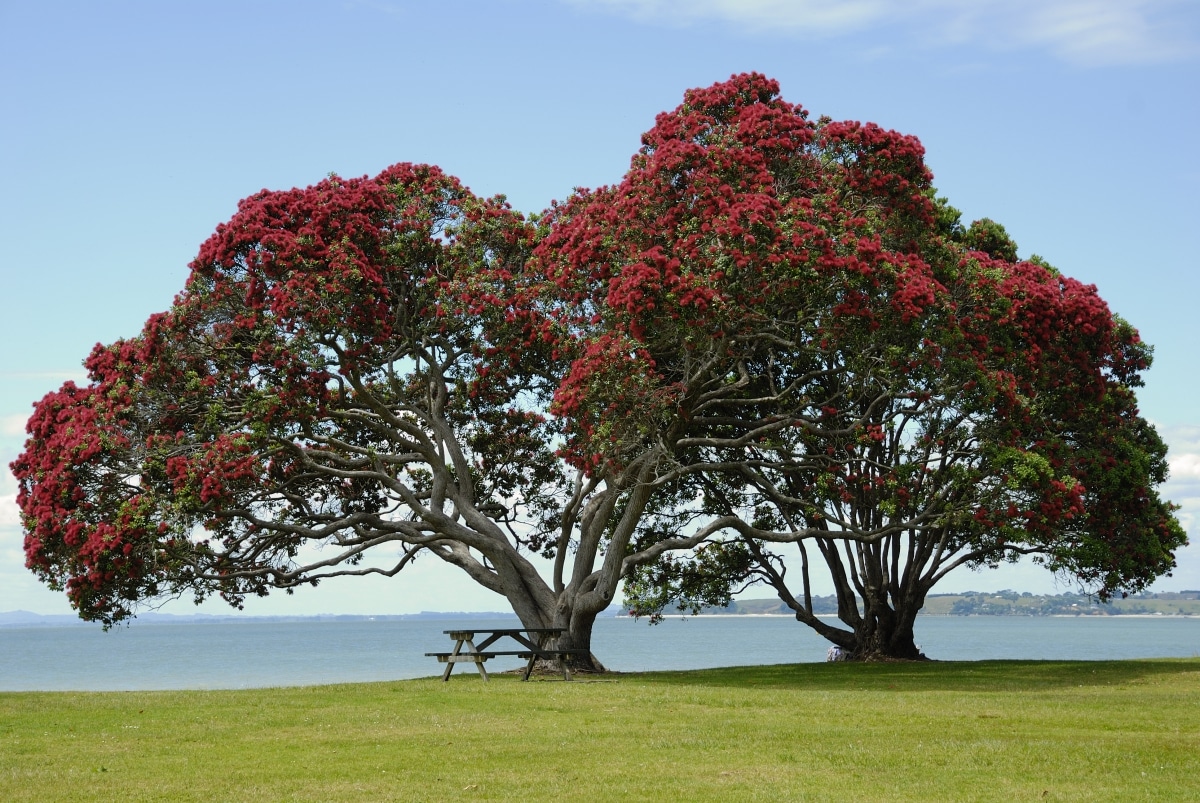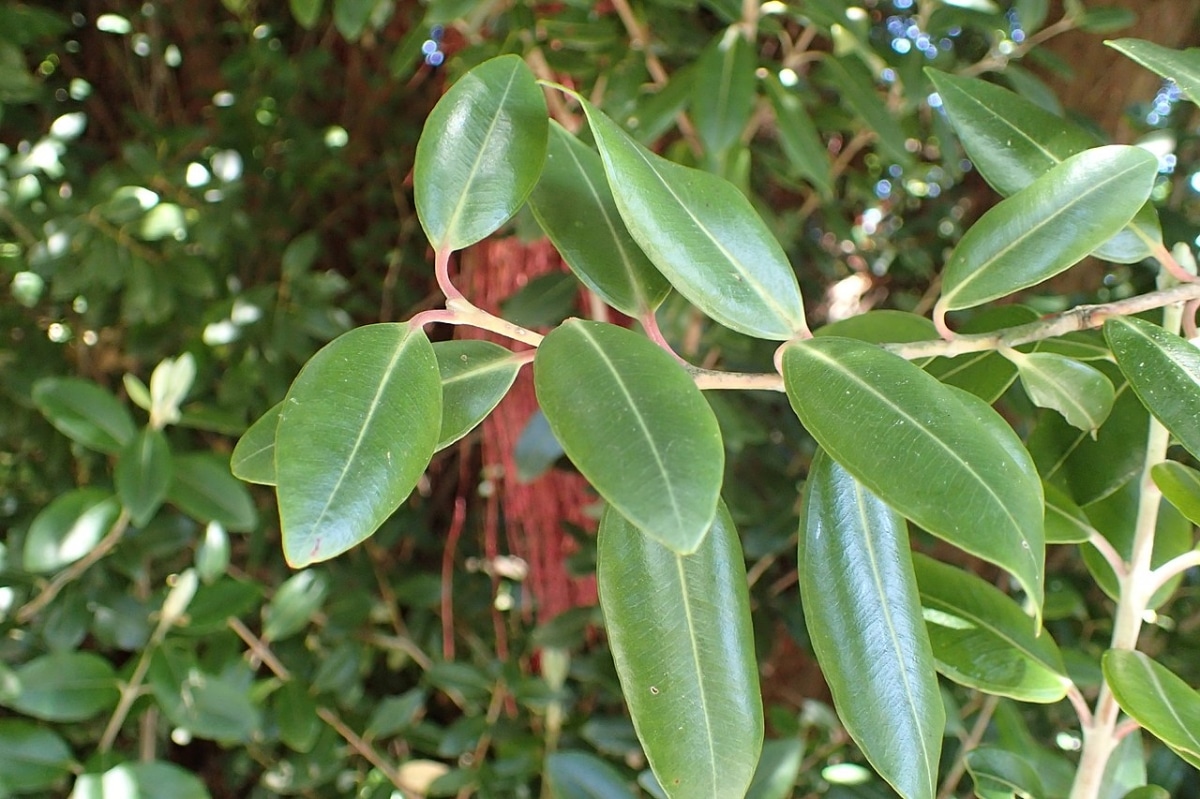
El metrosideros excelsa It is a tree that can become very large., and that also has a spectacular flowering. It is an ideal plant to have as an isolated specimen in large gardens, as this is an excellent way to enjoy the pleasant shade provided by its branches and leaves.
Its growth rate is of the medium type; this means that it grows an average of 20 to 30 centimeters per year, depending on the conditions in which it lives. In addition, it is a species to consider if you are looking for a tree that resists direct sun, so if this is the case, then I will tell you everything you need to know about it.
Origin and characteristics of metrosideros excelsa

Image – Wikimedia/Ed323
It is an evergreen tree endemic to New Zealand, where it is known by the common name pohutukawa; although it is also called the New Zealand Christmas tree elsewhere. It grows to a height of 20 meters, and develops a wide crown of 8-10 meters.. Under certain conditions, it is capable of developing aerial roots to improve its anchorage to the ground, such as occurs when it grows on a cliff.
The flowers are red, yellow or pink depending on the variety and/or cultivar, such as the 'Aurea' that produces them yellow. It blooms in summer, specifically, between December and February in the southern hemisphere, and between June and September in the northern hemisphere.
What uses does it have?
The New Zealand Christmas Tree used only as an ornamental plant. Planted as a solitary specimen it looks very good, especially when it blooms. However, in its place of origin it is being threatened by the Australian possum or possum. This was introduced in the country and enjoys nibbling the leaves of this tree, which is why the Project Crimson, whose objective is to protect both M. excelsa and other native trees.
What care does the metrosideros excelsa?
If you want to have one, it is important that you know in advance what its basic needs are, since this will make it easier for you to choose where to put it and what maintenance tasks you have to do so that it is good:
Location

Image - Wikimedia / Krzysztof Ziarnek, Kenraiz
It is a tree that It must be in a place exposed to direct sunlight, as far as possible from where there are pipes and soft floors. otherwise it could cause problems. In fact, it is best to plant it at least ten meters away from anything that could break or damage it.
Likewise, it is recommended that it is also placed away, at least 5 meters, from other large plants, be it other trees or palm trees. In this way, it will achieve better development.
Earth
It is not very demanding, but vegetates best in soils rich in organic matter and light. Likewise, it is highly recommended that it be planted in the garden as soon as possible; In this way, it will grow at a good pace and become stronger than it would if it were kept in a pot for a long time.
Now, if it is a young and/or seedling specimen, it can be kept in a container with drainage holes filled with universal substrate such as that of well-known brands such as Flower.
Irrigation
In general, during the summer you will have to water more often than during the winter, since the plant needs more water when it is growing. But the rest of the year, as the temperatures are lower and it usually rains, we will water less. But, how often do you have to do it?
It will depend on the climate in the area: the higher the temperatures and the less it rains, the more it will be necessary to water. However, what cannot be done is to keep the soil always moist, since it is not an aquatic plant and should not be treated as if it were, since it does not resist waterlogging.
In case of doubt, we recommend inserting a wooden stick. If when you take it out it comes out with a lot of adhering soil, it means that it is very wet and that, therefore, it should not be watered.
Subscriber

Image - Wikimedia / Krzysztof Ziarnek, Kenraiz
It is highly advisable to pay at metrosideros excelsa throughout its growing season, that is, from spring to late summer, or even until autumn if the weather is warm and there are no frosts or they are very weak. To do this, you can apply manure from herbivorous animals, guano, mulch, or compost.
It can also be fertilized with chemical fertilizers, such as the universal one that you can buy here or for flowering plants, following the instructions for use at all times.
Multiplication
It is possible to multiply it by seeds, which have to be sown in spring; and by cuttings in late winter or spring.
Rusticity
It is a tree that he doesn't like the cold; however, it can resist weak and occasional frosts down to -2ºC, perhaps -3ºC if it is protected from the wind.
What did you think of the metrosideros excelsa?